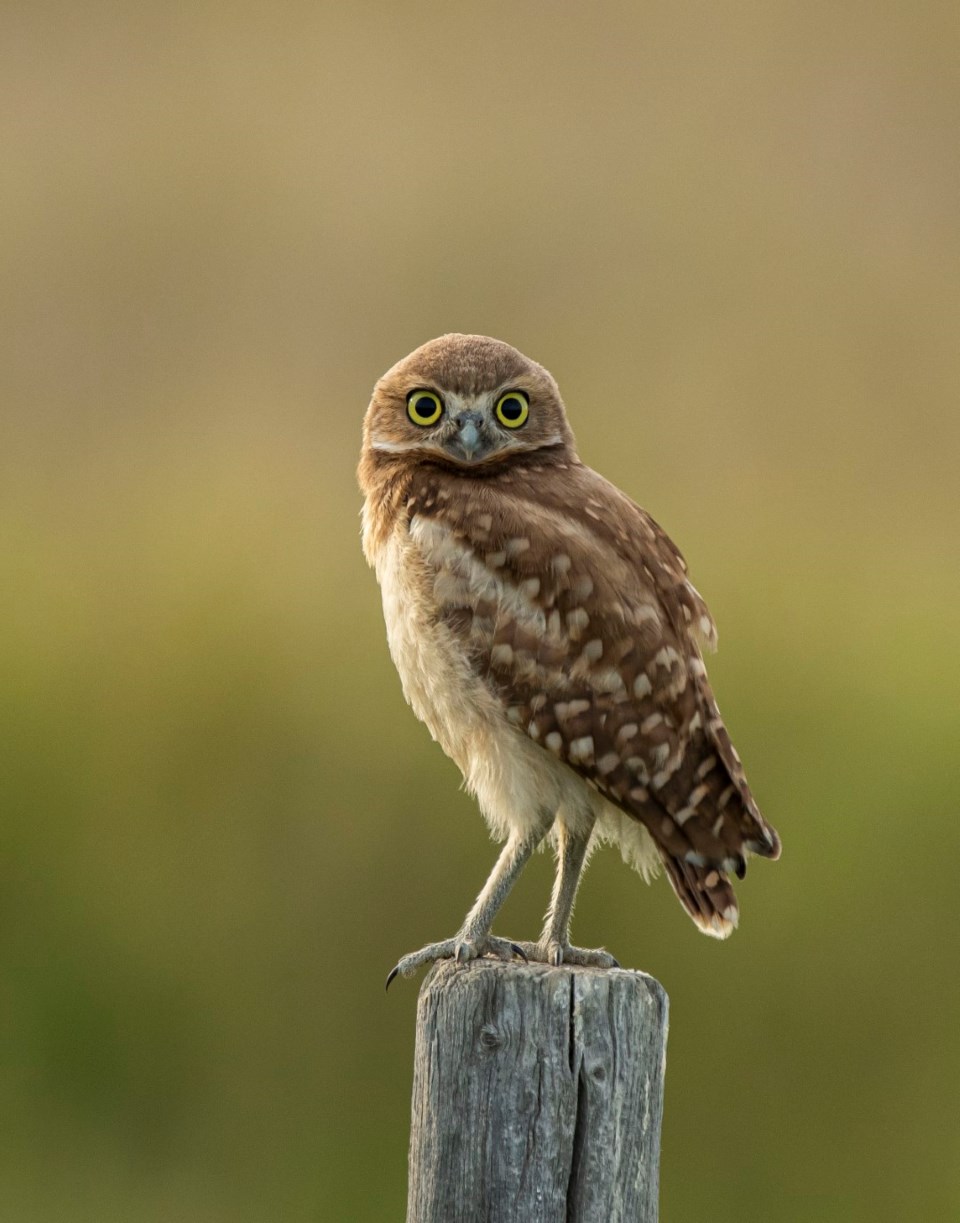REGINA – As we make our way into summer on the prairies, mid to late July marks the end of a busy nesting season for the endangered Burrowing Owls.
Right now, young Burrowing Owls are beginning to discover their independence as they start to leave the comfort of the nest and learn to hunt for themselves. While this is an exciting time in their life cycle, it does not come without risks. One of the many dangers a young and inexperienced Burrowing Owl can face is collision with vehicles. Kaytlyn Burrows, Habitat Stewardship co-ordinator at Nature Saskatchewan explains that “the juveniles often forage in roadside ditches, where they find small invertebrates and rodents that tend to congregate at dusk, but unfortunately, many of these young are killed by motorists whilst foraging along the sun-warmed road.”
The Burrowing Owl population faced a steep decline in the early 1990s and has not been able to recover, making the survival of each juvenile owl incredibly important for the growth of their population. There are ways to help the young owls survive during this critical time.
“When motorists are driving in Burrowing Owl habitat, and especially near known nest sites, it’s important that they take a few extra minutes and slow down. This will reduce the risk of owl-vehicle collisions,” Burrows says.
The owls can be found in native or tame pasture that has been well grazed by cattle, as this shorter grass allows them to spot predators. They can also be seen standing on or nearby the burrow, on nearby fence posts, or foraging in the ditches.
Slowing down while driving will not only help Burrowing Owls survive but may also increase your chances of spotting this endangered bird. A few key features to remember when identifying a Burrowing Owl are their mottled brown and white feathers, round head, white ‘eyebrows’, and long featherless legs. Don’t be fooled by its small size – they are only about nine inches tall (about the size of a robin).
Nature Saskatchewan runs a voluntary stewardship program, Operation Burrowing Owl, and currently partners with 350 private land title holders and managers to help conserve habitat and monitor population numbers. Program participants are the eyes and ears and help us by recording sightings to help determine population trends and distribution of the Burrowing Owl throughout Saskatchewan. This information is helpful towards the conservation of these charismatic birds.
If you think you have spotted a Burrowing Owl, please give a “hoot” by calling Nature Saskatchewan’s toll-free HOOT Line, 1-800-667-HOOT (4668) or email [email protected]. “When you report a sighting you are playing a very important role in Burrowing Owl recovery. Every sighting is critical,” says Burrows. Caller information is kept confidential.
— Submitted by Nature Saskatchewan



